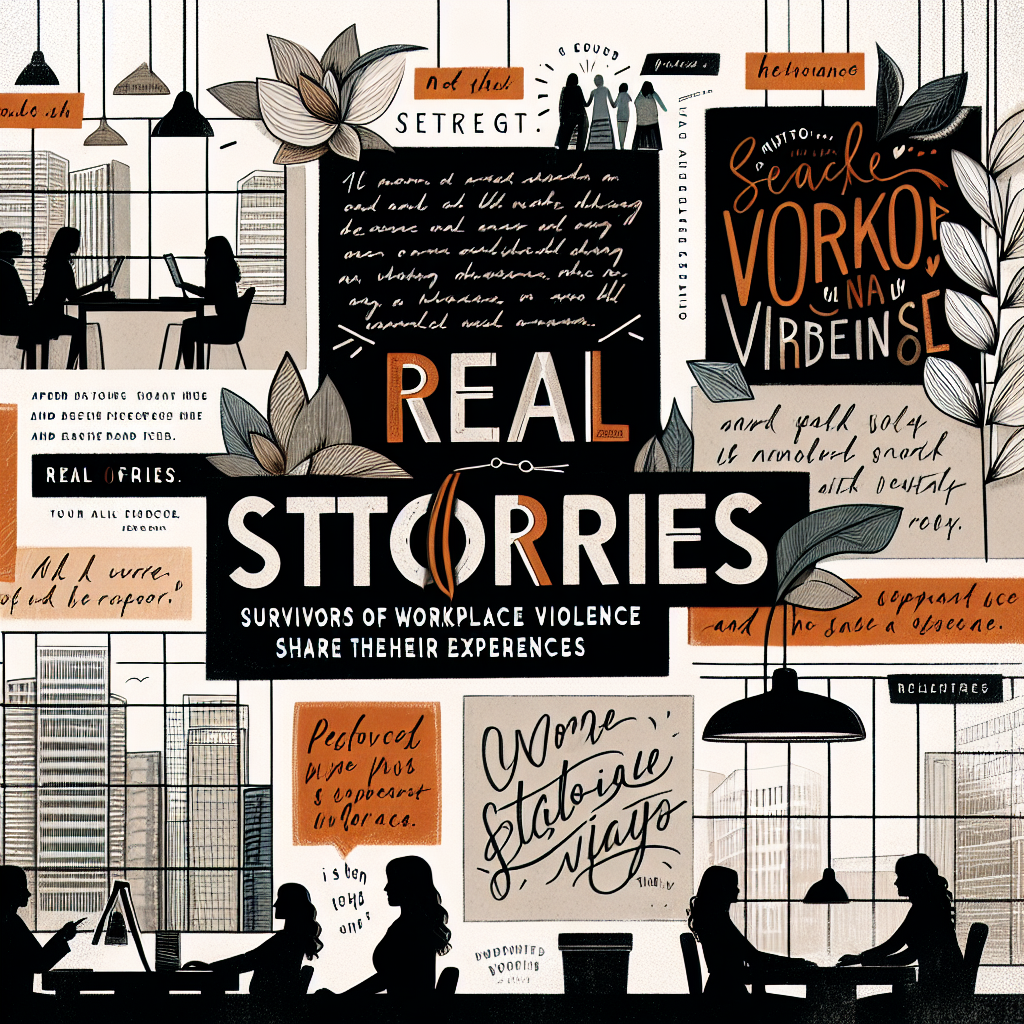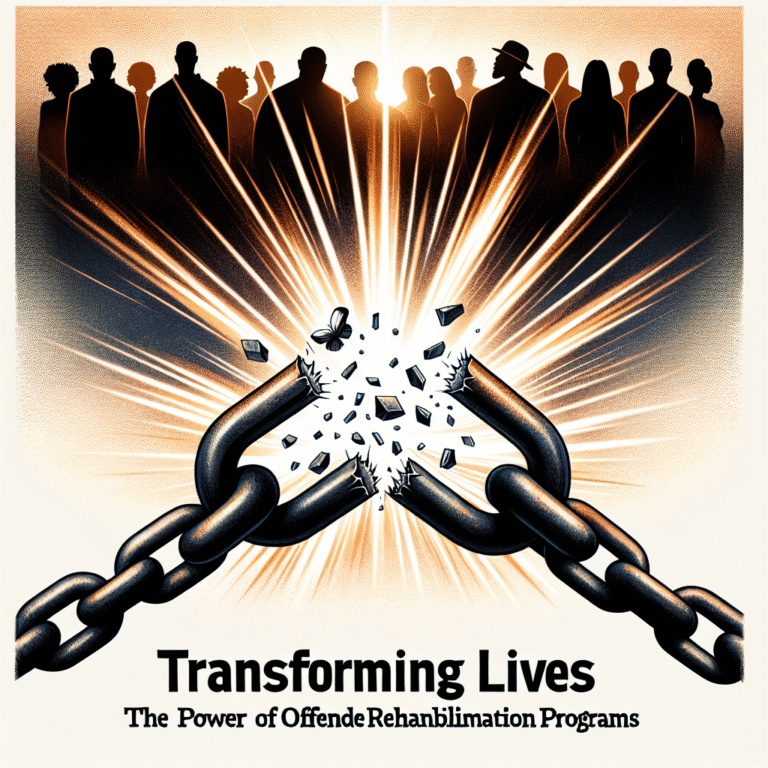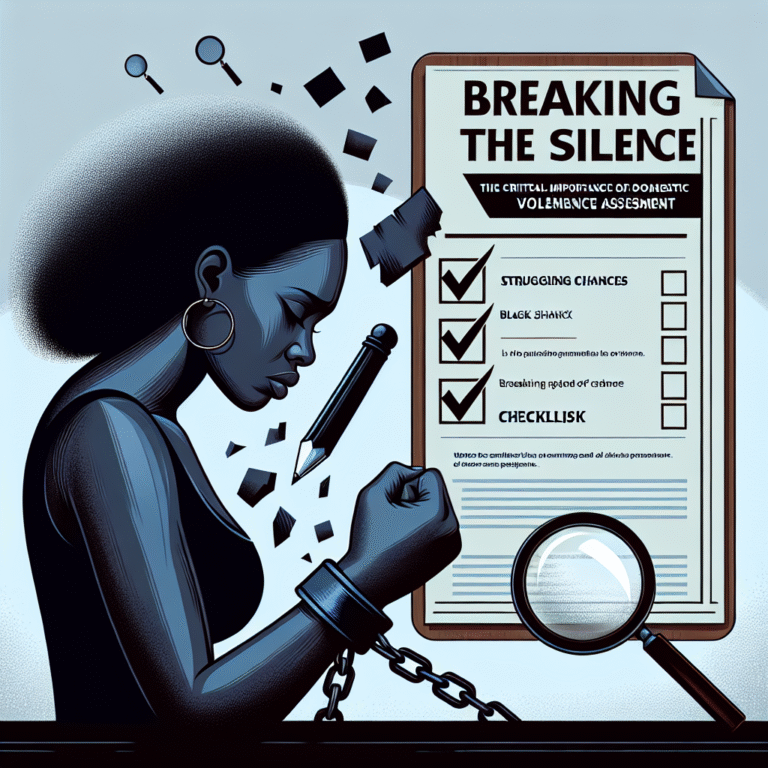
Introduction: The Untold Narratives of Resilience
Workplace violence is an alarming reality for many, affecting not only physical safety but the mental health and well-being of countless employees. According to the U.S. Occupational Safety and Health Administration (OSHA), nearly two million American workers report being victims of workplace violence each year. Real Stories: Survivors of Workplace Violence Share Their Experiences provides a profound lens through which to explore this serious issue, highlighting not just the dark events but also the incredible pathways to recovery and empowerment.
As we navigate through these narratives, we will gain insights into the emotional and psychological aftermath of such incidents. The experiences shared compel us to face the harsh truths about workplace violence, but they also inspire hope and demonstrate resilience in the face of adversity. Let’s delve into these remarkable stories, exploring the lessons learned and actionable insights that can lead to safer workplaces for everyone.
Understanding Workplace Violence: A Broader Perspective
What Constitutes Workplace Violence?
Workplace violence can take many forms, from verbal harassment to physical assault. It encompasses various acts, including:
- Physical Assault: Attacks that cause bodily harm.
- Verbal Threats: Intimidation and threats that instill fear.
- Bullying: Systematic emotional harm that undermines an individual’s dignity.
Understanding these forms can prepare us to recognize the signs and take action, which is vital.
Data Overview: The Prevalence of Workplace Violence
| Type of Workplace Violence | Percentage of Occurrences |
|---|---|
| Physical Assault | 40% |
| Threatening Behavior | 30% |
| Bullying | 25% |
| Sexual Harassment | 5% |
The above table illustrates the varied landscape of workplace violence, reminding us just how widespread this issue is.
Real Stories of Courage: Survivors Speak Out
Case Studies: Transformative Narratives of Resilience
Case Study 1: Jane’s Journey from Fear to Empowerment
Background: Jane, a nurse, experienced her first encounter with workplace violence when a patient violently lashed out during a mental health crisis.
Response and Aftermath: Initially, Jane felt humiliated and frightened. However, she attended counseling sessions and joined a support group for healthcare professionals.
Relevance: Jane’s story highlights the importance of institutional support and mental health resources. By sharing her experience through forums and workshops, she began advocating for better training in de-escalation techniques.
Case Study 2: Mark’s Turnaround in a Toxic Corporate Culture
Background: Mark worked in a high-stress corporate environment plagued by verbal abuse and bullying from management.
Response and Aftermath: He chose to document each incident and brought these to HR, which led to an internal investigation and ultimately, policy changes.
Relevance: Mark’s story emphasizes the need for employees to report incidents of workplace violence, reinforcing that speaking up can drive systemic change.
Case Study 3: Fatima’s Fight Against Gender-Based Harassment
Background: Fatima, an engineer, faced sexual harassment in a predominantly male industry.
Response and Aftermath: After documenting her experiences, she launched an awareness campaign that raised significant attention to the issue.
Relevance: This case underlines the importance of solidarity amongst workers and the power of collective action in combating workplace violence.
Key Insights from Survivors’ Experiences
The Importance of Support Systems
Survivors often cite the crucial role played by supportive colleagues and friends. Establishing a culture of support at work can be vital in fostering mental well-being and recovery. Creating safe spaces for discussions around workplace violence can alleviate the isolation that survivors often feel.
Advocacy and Awareness: Catalysts for Change
Real Stories: Survivors of Workplace Violence Share Their Experiences not only inform but empower others to take action. Survivors often become advocates, pushing for policy changes and better training for employees.
Coping Mechanisms: Building Resilience
The coping strategies outlined by survivors include:
- Mindfulness Practices: Techniques like meditation can reduce anxiety levels.
- Professional Therapy: Speaking with mental health professionals helped many survivors process their experiences.
- Peer Support Groups: Sharing their struggles and triumphs with others who have gone through similar experiences often proved beneficial.
Practical Steps for Employers: Creating Safer Work Environments
Policy Implementation
Employers must develop clear policies regarding workplace violence, featuring definitions, reporting procedures, and disciplinary actions. This clarity can empower employees to report incidents without fear of retribution.
Training and Education
Regular training sessions focusing on recognizing and preventing violence can equip employees with the necessary skills to handle potential threats.
Stress Management Programs
Implementing employee assistance programs (EAPs) can provide resources for those dealing with the mental health impacts of workplace violence.
Conclusion: Turning Pain into Power
The stories of those who have navigated the treacherous waters of workplace violence serve as beacons of hope. Real Stories: Survivors of Workplace Violence Share Their Experiences not only reflect the painful realities many endure but also showcase their astonishing strength and resilience. The journey toward acknowledging and addressing workplace violence is ongoing, but through education, advocacy, and support, we can foster safer, healthier workplaces.
Let each story inspire broader conversations about change. Together, we can ensure that workplace violence is no longer an unspoken battle but a recognized issue that leads to transformative action.
FAQs about Workplace Violence
1. What should I do if I experience workplace violence?
If you experience workplace violence, report the incident to your supervisor or HR department immediately. Document everything, gather evidence, and consider seeking professional help for emotional well-being.
2. How can I support a colleague who has experienced workplace violence?
Listen empathetically without judgment, encourage them to seek professional help, and support their decision to report the incident if they feel comfortable doing so.
3. How can my company prevent workplace violence?
Implement policies against violence, conduct regular training for employees, and foster an open culture where employees feel safe discussing their concerns.
4. What mental health resources are available for survivors?
Many organizations offer Employee Assistance Programs (EAPs) that include counseling. Community mental health resources and support groups can also be beneficial.
5. Are there legal actions one can take against workplace violence?
Victims of workplace violence may have the right to file legal claims depending on the nature of the incident. It’s advisable to consult with a legal professional for tailored guidance.
By sharing these Real Stories: Survivors of Workplace Violence Share Their Experiences, we illuminate the path toward change. Let their voices guide the way to stronger, more compassionate workplaces for everyone.

















